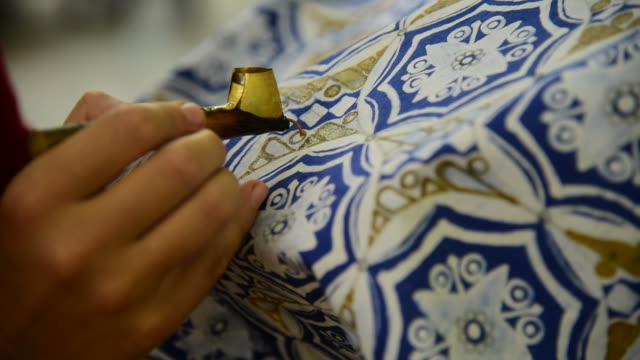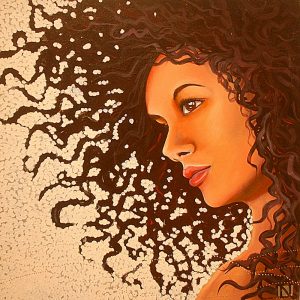The Timeless Elegance of Batik Art: A Fusion of Tradition and Creativity
 Posted On
Posted On
Batik, a revered art form originating from Indonesia, embodies a mesmerizing fusion of culture, history, and artistic finesse. With intricate patterns and vibrant colours, this ancient technique has transcended time, captivating hearts worldwide with its timeless elegance.
At its core, Batik is a method of dyeing fabric using wax-resist techniques. The process involves applying wax to the cloth in specific areas to prevent dye from penetrating, creating stunning designs and patterns. The craft demands precision, patience, and an artistic flair passed down through generations.
The origins of Batik trace back centuries ago, with evidence dating back to the island of Java in Indonesia. Initially practiced by artisans and royals, Batik was a symbol of status and cultural identity. Over time, it evolved from a royal adornment to a celebrated art form among the masses, becoming a means of storytelling and expression for the Indonesian people.
What sets Batik apart is its diverse range of motifs, each carrying symbolic meanings deeply rooted in local traditions. From geometric patterns to floral designs, every motif signifies different aspects of life, from spirituality to nature, and often reflects the rich tapestry of Indonesian folklore and mythology. For instance, the “parang” motif, resembling a traditional Javanese dagger, symbolizes power and strength.
The creation of Batik involves a meticulous process. Artisans start by sketching the desired design onto the fabric, followed by the meticulous application of wax using a tool called a “canting.” The wax acts as a barrier, preserving the fabric’s original colour. Subsequent dyeing stages, where different colours are applied, result in the gradual unveiling of the intricate patterns. Finally, the fabric undergoes a boiling process to remove the wax, revealing the vibrant masterpiece beneath.
What makes Batik a cherished art form transcending borders is its adaptability and evolution. While rooted in tradition, contemporary artists have infused their creativity, experimenting with colours, designs, and techniques. This fusion of traditional methods with modern interpretations has led to innovative styles that appeal to a global audience while preserving the essence of Batik.
Beyond its aesthetic allure, Batik holds immense cultural significance. It has been recognized as a UNESCO Intangible Cultural Heritage, safeguarding its heritage and ensuring its continuation for future generations. Furthermore, Batik plays a pivotal role in Indonesia’s economy, serving as a source of livelihood for numerous artisans and contributing significantly to the country’s cultural tourism.
In recent years, the appreciation for Batik has expanded worldwide, with fashion designers incorporating Batik fabrics into their collections and art enthusiasts embracing its beauty. Workshops and initiatives aimed at preserving and promoting this art form have sprung up globally, fostering a deeper understanding and admiration for Batik.
In a world driven by rapid change, Batik stands as a testament to the enduring legacy of tradition and craftsmanship. Its intricate designs and cultural significance continue to weave stories of heritage and creativity, bridging the past with the present and inspiring generations to come. Batik remains not just an art form but a living heritage, connecting hearts across continents through its timeless elegance.



